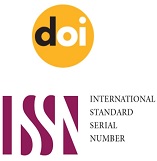Essay on the few, the few and the many in Peru
DOI:
https://doi.org/10.26490/uncp.alboradaciencia.2023.3.1786Keywords:
Domination, colonialism, decoloniality, dependence, povertyAbstract
The topic is very complaining. Is it true that Peru belongs to the few, the few and the many? How can we understand these political, social, economic, and educational differences that Peru presented and presents? The ones, made up of businessmen, the construction group, the media who seek power, wealth and have become the leaders of the destiny of our country.
The few are the professionals, the emerging merchants, the micro-entrepreneurs who seek to progress and see the country, as the world of opportunities that seek their particular or group interests, to achieve social prestige, political power, because they were almost always excluded. and marginalized by some.
The many are the poor, the marginalized and the economically, socially and politically excluded, who live only on hopes rooted in their customs, their religious creeds, traditions imposed since the conquest motivated by colonialism.
References
Amat y León, C. (1990). Niveles de vida y grupos sociales en el Perú. LIma - Perú: Universidad del Pacífico.
Arguedas, J. M. (1983). El zorro de Arriba y el zorro de abajo. Lima: Horizonte.
Belaunde, V. A. (2010). La Realidad Nacional. Lima: El Comercio S.A.
Cruz Layme, A. M. (08 de 08 de 2013). Programas sociales y perspectivas desde la mirada de los pueblos indígenas y con el desarrolloo con identidad. Obtenido de https://www.cultura.gob.pe/: https://www.cultura.gob.pe/
Fanon, F. (1963). Los condenados de la tierra. México: Fondo cultural económica méxico.
González Prada, M. (2006). Horas de lucha. Lima: Universitaria Latina.
Herrera, J., & Ángelo, C. (2017). Pobreza, desigualdad y políticas sociales: balances 2011 - 2016 y agencia de investigación 2017 - 2021. Lima: Consorcio de investigación económica y social. http://ceprepuc.pucp.edu.pe/ (2019).
López Jiménez, S. (08 de mayo de 2001). El Fujimorismo como régimen político. Obtenido defiles.pucp.edu.pe/departamento/economia/:files.pucp.edu.pe/departamento/economi a/ La Chira, J. C. (2010). 7 ensayos de interpretación de la relaidad peruna. Lima: El Comercio S.A.
Mauro, R. (10 de Octubre de 2006). www.desco.org.pe/recursos/site/files/CONTENIDO/. Obtenido de www.desco.org.pe/recursos/site/files/CONTENIDO: www.desco.org.pe/recursos/site/files/CONTENIDO
Morán Beltrán, L. E. (2002). Visón del indio en la obra de JUan Ginés de Sepúlveda. Revista filosófica, 127 - 142.
Morín, E. (2011). Cómo vivir en tiempos de crisis. España: Nueva Visión.
Morín, E. (2016). Enseñar a vivir. Barcelona - España: Paidós.
Quijano, A. (mayo - agosto 2013). El Trabajo. ARGUMENTOS • UAM-XOCHIMILCO, 145 - 163.
Quiroz, A. W. (2013). Historia de la corrupción en el Perú. Lima: Instituto de Estudios Peruanos.
Said, E. W. (2008). Orientalismo. Barcelona: Liberduplex S.L.U.
Silva, J. P., & Rodríguez, J. (13 de MAYO de 2001). files.pucp.edu.pe/departamento/economía/LDE; Obtenido de files.pucp.edu.pe/departamento/economia/LDE: files.pucp.edu.pe/departamento/economia/LDE
Downloads
Published
Issue
Section
License
Copyright (c) 2023 Julián Alberto Berrocal Camarena

This work is licensed under a Creative Commons Attribution-NonCommercial-ShareAlike 4.0 International License.









